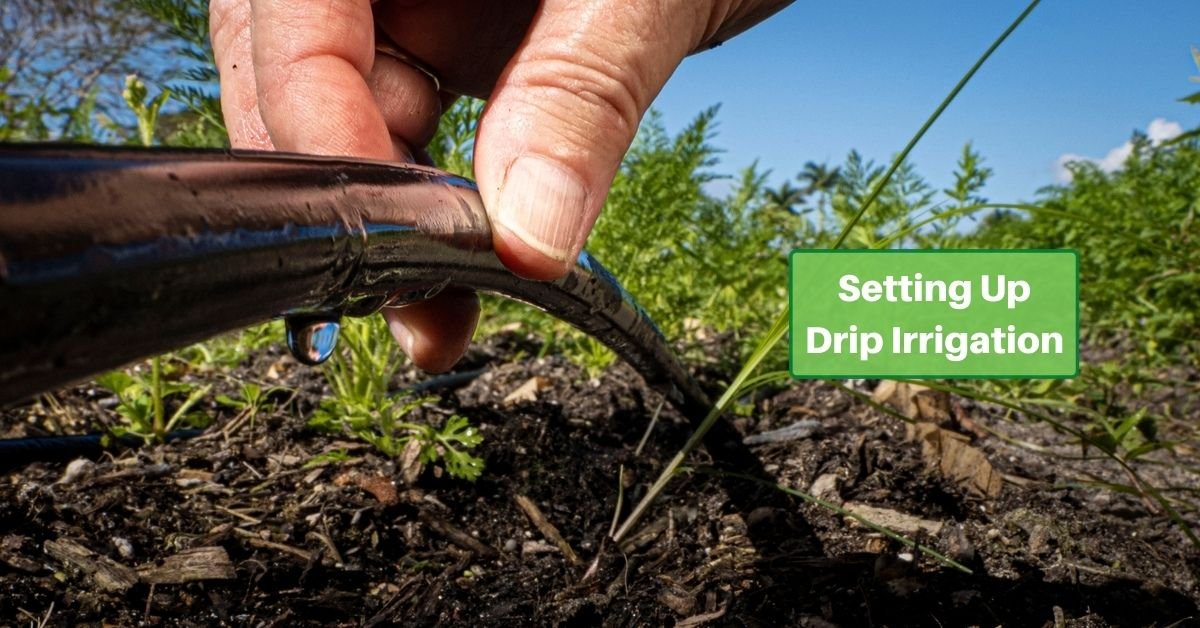Every homeowner strives for a lush and healthy lawn. However, it’s also a tough challenge to attain that goal. A big part depends on properly watering the area.
Traditional sprinkler systems can be wasteful and imprecise, leading to overwatering in some areas and under-watering in others. This is where drip irrigation systems come to the rescue.
In this article, we’ll explore the advantages of a drip irrigation system for your home lawn and garden.
Advantages of Drip Irrigation
Drip irrigation is a method of delivering water directly to the roots of plants through a network of tubes, pipes, and emitters. Here are the key advantages of using such a system for your home lawn and garden:
- Water Efficiency: One of the primary benefits of drip irrigation is its remarkable water efficiency. Unlike traditional sprinkler systems that spray water into the air, drip systems deliver moisture directly to the root zone of plants, minimizing evaporation and reducing water wastage.
- Precise Targeting: Drip emitters and hoses can be strategically placed to deliver water where it’s needed the most. This reduces the risk of overwatering or underwatering specific areas, ensuring optimal growing conditions for your plants.
- Weed Suppression: By delivering water only to your plants and not to the surrounding soil, drip irrigation helps inhibit weed growth. Weeds require consistent moisture to thrive, so the drier soil between plants discourages their development.
- Reduced Disease Risk: Drip irrigation keeps plant leaves dry, reducing the risk of fungal diseases that thrive in humid conditions. This is particularly advantageous for plants susceptible to issues like powdery mildew and leaf spot.
- Versatility: Drip systems can be customized for a wide variety of plants, from flower beds and vegetable gardens to shrubs and trees. You can adjust the flow rate and placement of emitters to suit the needs of different plant types.
Potential Disadvantages of Drip Irrigation
While drip irrigation offers numerous advantages, it’s essential to consider potential drawbacks as well:
- Initial Setup: Installing a drip irrigation system can be more labor-intensive than setting up traditional sprinklers. It also requires more technical expertise However, once installed, it requires less maintenance.
- Clogging: Drip emitters and hoses may become clogged over time due to mineral deposits or debris in the water supply. Regular maintenance, including flushing the system and using filters, can help mitigate this issue.
- Cost: The initial investment in a drip irrigation system, including tubing, emitters, and a timer, can be higher than that of traditional sprinklers. However, the long-term water savings often offset the initial cost.
Designing Your Drip Irrigation System
Designing an effective drip irrigation system for your lawn and garden involves several key steps:
Assess Your Landscape
Start by assessing your landscape, including plant types, their water requirements, and the layout of your garden. Identify areas that require more or less water.
Select Components
Choose the appropriate components for your system, including drip tubing, emitters (such as drip emitters, drip lines, or soaker hoses), connectors, and a filter. Consider using a timer or irrigation controller for automated watering.
Lay Out Your System
Lay out the drip tubing and emitters according to your landscape’s needs. Ensure that the tubing reaches all areas of your garden. Use stakes or anchors to secure the tubing in place.
Calculate Flow Rates
Calculate the flow rates of your emitters to match the water requirements of different plants. You can adjust flow rates by selecting emitters with different specifications or using pressure regulators.
Connect to a Water Source
Connect the drip tubing to your water source using the appropriate connectors. Be sure to include a filter to prevent clogging. If you’re using a timer, connect it to automate your watering schedule.
Water Bill Savings with Drip Irrigation
One of the most significant advantages of drip irrigation is the potential for substantial water bill savings. While the initial investment may seem high, the long-term benefits often outweigh the costs. Here’s how drip irrigation can lead to water bill savings:
Water Efficiency
Drip irrigation systems are highly efficient, delivering water directly to plant roots without wasteful overspray. This precision can result in significant water savings compared to traditional sprinkler systems.
Reduced Evaporation
Traditional sprinklers can lead to substantial water loss through evaporation, especially during hot and windy conditions. Drip irrigation minimizes this loss by keeping water at the root level.
Consistent Moisture
Drip systems maintain consistent soil moisture levels, preventing the need for excessive watering to compensate for dry spots. This consistency reduces water usage.
Recommended Watering Schedule for Drip Irrigation
The frequency and duration of watering with a drip irrigation system depend on various factors, including your plant types, local climate, and soil conditions. However, here are some general guidelines:
Early Morning Watering
It’s best to water in the early morning when temperatures are lower, reducing the risk of evaporation. This also allows plants to absorb moisture before the heat of the day. That’s true for any kind of watering but it’s a great way to optimize the benefits of your drip system.
Infrequent, Deep Watering
Rather than frequent shallow watering, aim for infrequent deep watering sessions. This encourages plants to develop deep roots and makes them more resilient during dry periods.
Soil Moisture Monitoring
Use a soil moisture sensor or conduct regular manual checks to gauge soil moisture levels. Adjust your watering schedule based on the actual needs of your plants.
Seasonal Adjustments
Be prepared to adjust your watering schedule seasonally. Plants have different water requirements in the summer compared to the winter, so adapt accordingly.
A drip irrigation system can be a game-changer for homeowners looking to maintain a healthy lawn and garden while conserving water and reducing maintenance. While there may be some initial costs and considerations, the long-term benefits, including water bill savings and healthier plants, make it a wise investment. With proper planning, design, and maintenance, a well-executed drip irrigation system can transform your outdoor space into a thriving oasis of greenery.









